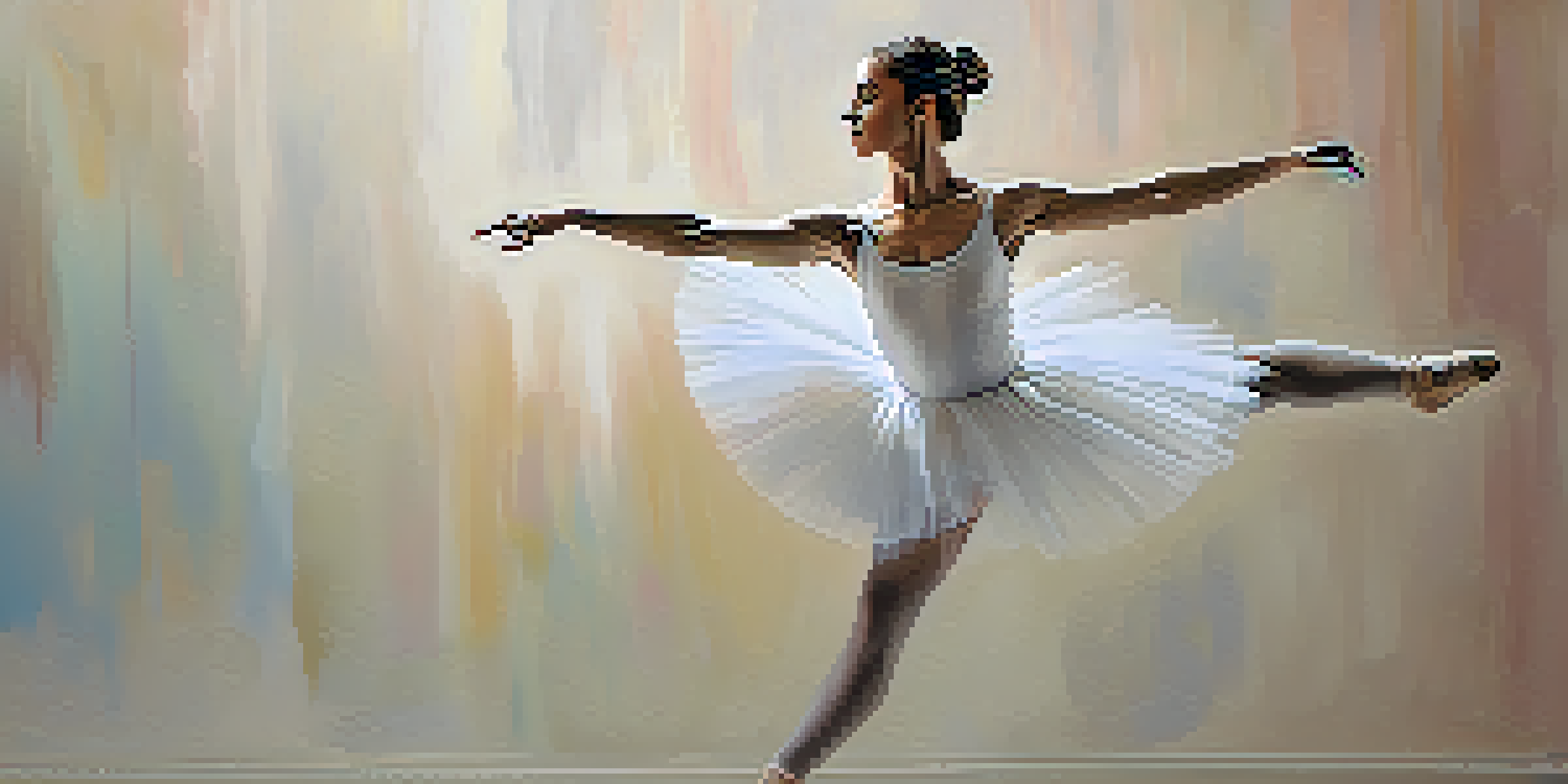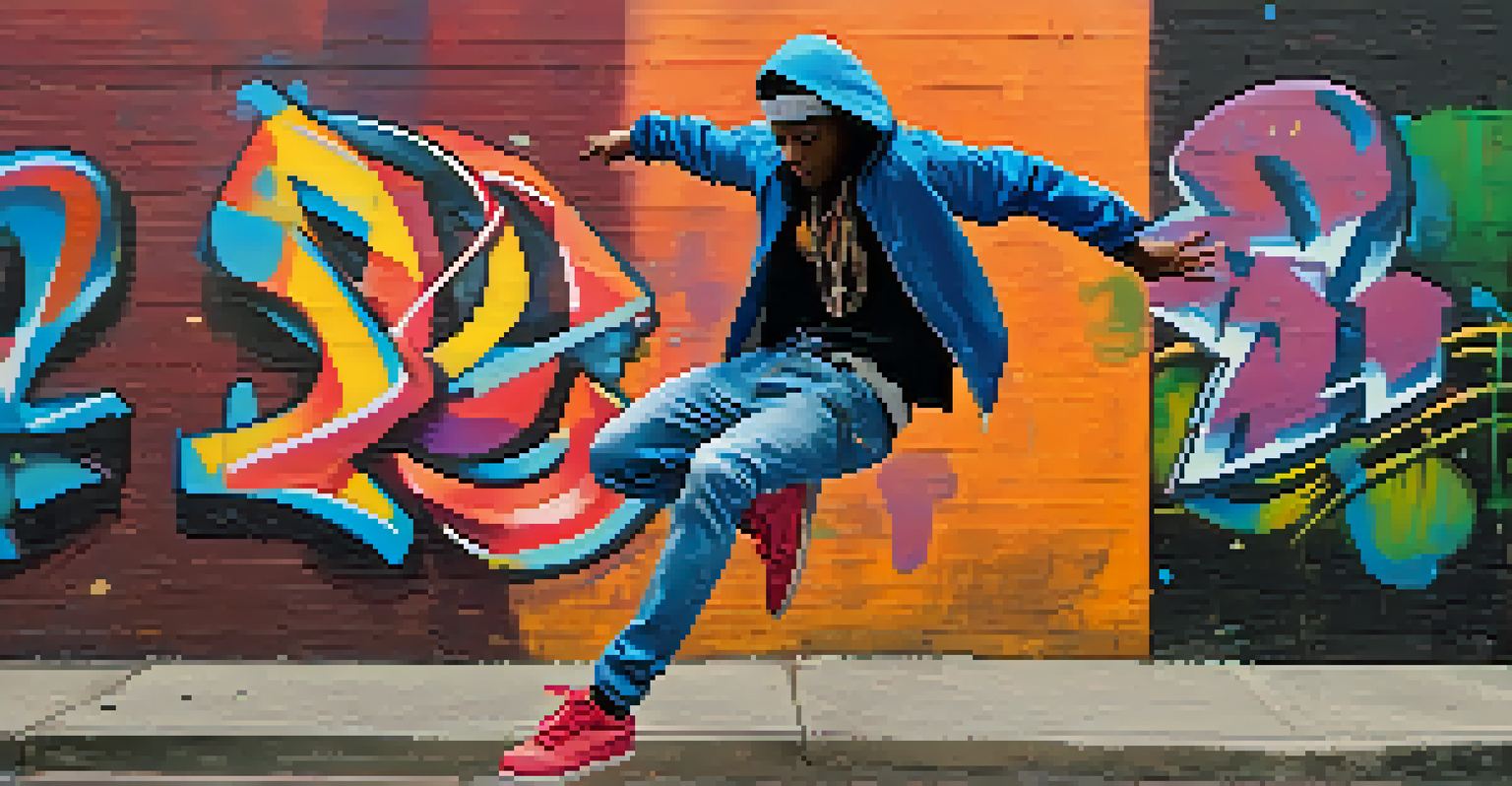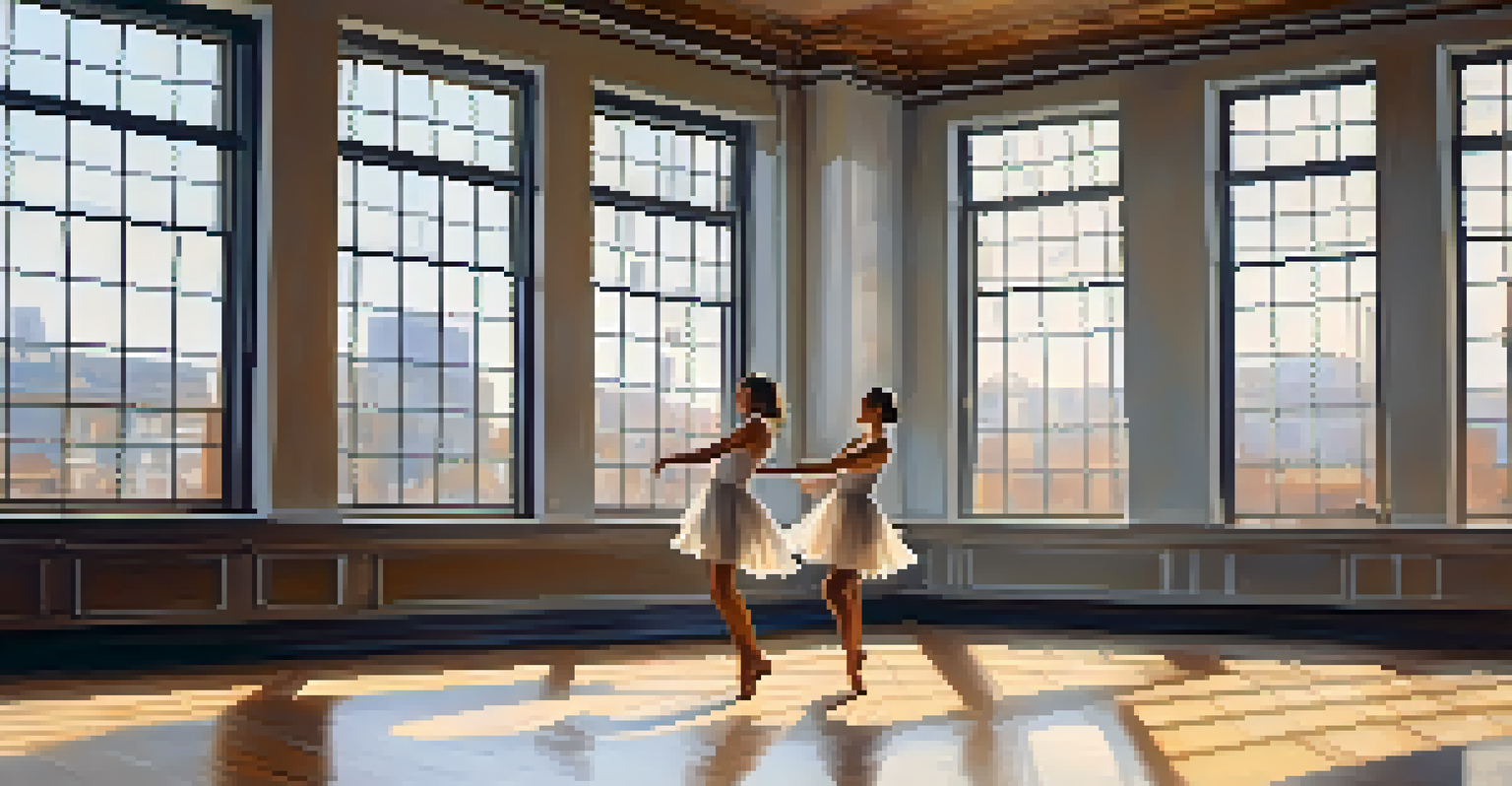Body Language in Dance: A Study of Non-Verbal Cues

Understanding Body Language: The Silent Communicator
Body language is a powerful form of communication that often speaks louder than words. In dance, it's the unspoken cues that convey emotions, intentions, and narratives. Dancers use their bodies to express feelings, connecting with audiences on a deeper level without uttering a single word.
Dance is the hidden language of the soul.
Every movement, from the subtleties of a hand gesture to the strength of a leap, carries meaning. For instance, an open posture might symbolize vulnerability, while a closed stance could suggest defensiveness. Understanding these cues can enhance the viewer's experience, making them feel the story behind the dance.
Moreover, dancers often synchronize their body language with music and rhythm, creating a cohesive storytelling experience. This connection between movement and sound enriches the non-verbal dialogue, allowing audiences to interpret the performance through both visual and auditory lenses.
The Role of Facial Expressions in Dance
Facial expressions are a crucial aspect of body language in dance, adding another layer of meaning to the performance. A dancer's face can convey joy, sorrow, anger, or passion, often amplifying the emotions expressed through movement. This subtle interplay between facial cues and physical gestures creates a rich tapestry of storytelling.

For example, a bright smile can transform a lively dance into a celebration, while a furrowed brow might hint at struggle or conflict. These expressions help to establish a connection between the dancer and the audience, inviting viewers to immerse themselves in the narrative.
Body Language Enhances Dance Storytelling
Dancers use body language to convey emotions and narratives, creating a deeper connection with the audience.
Dancers often train to master the art of facial expression, understanding that their eyes and mouth can communicate emotions just as powerfully as their limbs. This training is essential, as it helps to ensure that the intended message resonates with the audience, enhancing the overall impact of the performance.
Cultural Influences on Dance Body Language
Dance is a reflection of cultural identity, and body language plays a pivotal role in this expression. Different cultures have unique ways of interpreting movements and gestures, which can lead to varied meanings in performances. Understanding these cultural nuances is essential for dancers and audiences alike.
The body says what words cannot.
For instance, in some cultures, a graceful hand movement might symbolize peace, while in others, it could represent a call to action. This diversity enriches the global dance landscape, allowing for cross-cultural exchanges that enhance our understanding of non-verbal communication.
Additionally, dancers often draw inspiration from their cultural backgrounds, embedding traditional gestures into their performances. This not only honors their heritage but also educates audiences about the significance of body language across different societies.
Interpreting Non-Verbal Cues in Different Dance Styles
Each dance style comes with its own set of non-verbal cues and body language. For example, ballet emphasizes poise and control, where every movement is calculated to convey elegance. In contrast, hip-hop often showcases raw energy and individuality, with body language that reflects spontaneity and self-expression.
Understanding these distinctions helps audiences appreciate the nuances of each style. A ballet dancer's fluidity and grace might evoke a sense of serenity, while a hip-hop dancer's sharp, dynamic movements could ignite excitement and energy in the viewer.
Facial Expressions Amplify Emotions
Facial expressions play a crucial role in dance, adding emotional depth and helping establish a connection with viewers.
Furthermore, as dance styles evolve, so do the associated body language cues. Contemporary dance, for instance, often blends various styles, resulting in a rich vocabulary of non-verbal communication that challenges traditional interpretations and invites new perspectives.
The Impact of Body Language on Audience Perception
The way dancers use body language significantly influences how audiences perceive a performance. Non-verbal cues can elicit emotional responses, drawing viewers into the story being told. This connection can turn a simple dance into a powerful experience that resonates long after the curtain falls.
When dancers effectively convey emotions through their movements, audiences are more likely to engage with the narrative. A powerful leap or a poignant pause can evoke feelings of joy, sadness, or nostalgia, allowing spectators to experience the performance on a personal level.
Moreover, audience members often interpret body language based on their own experiences and cultural backgrounds. This subjective interpretation adds an additional layer to the performance, making each viewer's experience unique and personal.
Training Dancers to Master Body Language
Training in body language is an essential component of a dancer's education. Dance instructors often emphasize the importance of non-verbal communication, teaching students how to express emotions through their movements. This training helps dancers develop a keen awareness of their bodies and how they convey meaning.
Techniques such as improvisation and character work allow dancers to explore different ways of expressing emotions. By experimenting with various movements and facial expressions, they can discover what resonates best with their audience, enhancing their overall performance.
Cultural Context Shapes Dance Interpretation
Understanding cultural influences on body language is essential for both dancers and audiences to appreciate diverse dance expressions.
Additionally, workshops focused on body language can provide valuable insights into the subtleties of non-verbal communication. These sessions often encourage dancers to reflect on their own experiences and cultural influences, ultimately helping them to become more versatile and expressive performers.
Conclusion: The Art of Non-Verbal Communication in Dance
In conclusion, body language is an integral aspect of dance that transcends words. It serves as a powerful tool for storytelling, allowing dancers to communicate emotions and narratives effectively. By understanding and mastering non-verbal cues, dancers can create profound connections with their audiences.
As we've explored, body language in dance encompasses a variety of elements, from facial expressions to cultural influences. Each component contributes to the rich tapestry of communication that makes dance a unique art form.

Ultimately, recognizing the significance of body language in dance not only enhances our appreciation of performances but also deepens our understanding of the universal language of movement. Through dance, we can all learn to express ourselves and connect with others, even without uttering a single word.